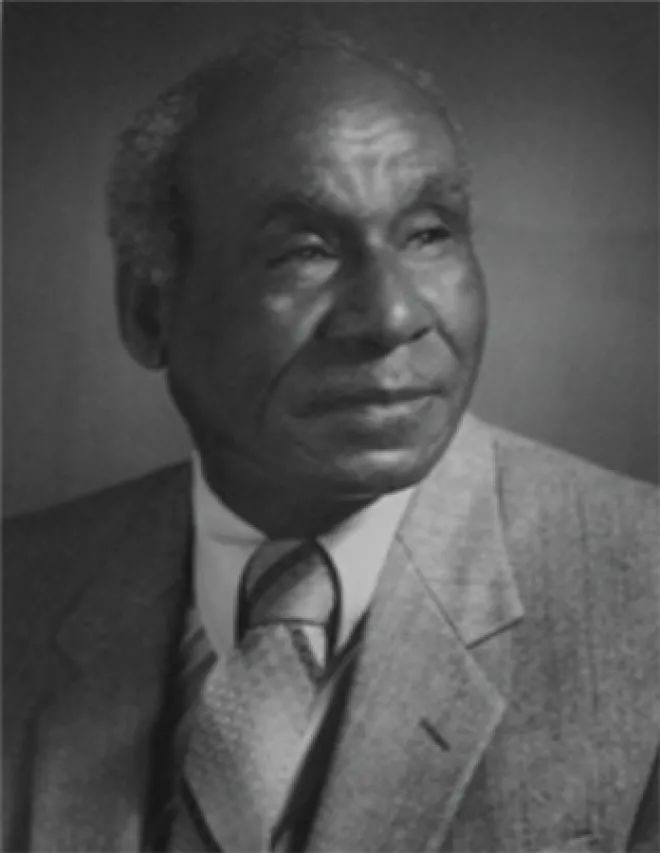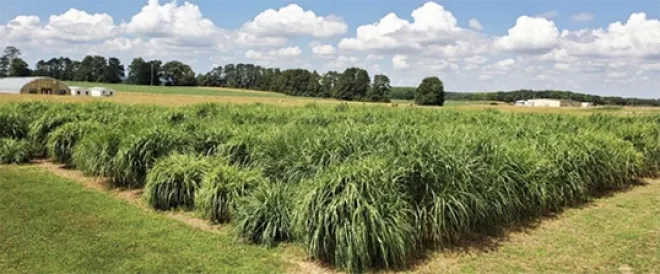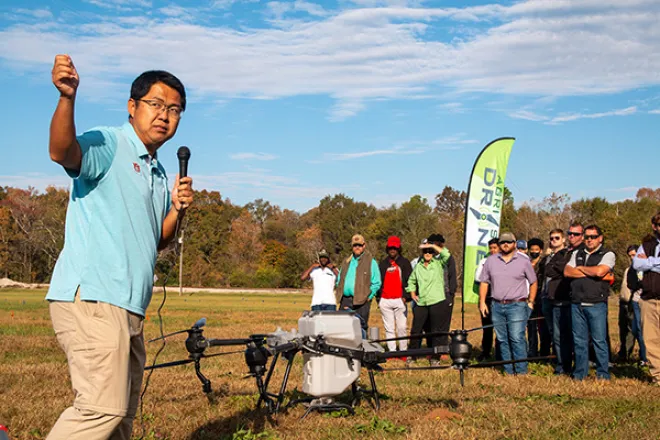To celebrate National Alabama Day on December 14, USDA’s National Institute of Food and Agriculture (NIFA) is highlighting the innovative NIFA-funded research conducted by Land-grant Universities throughout the state.

Learn more about Alabama’s history and the agriculture challenges researchers are working to combat.
Historical Background
Alabama has the unique privilege of housing three individual Land-grant Institutions that work together to further agricultural research in the state. Alabama A&M University (AAMU), Auburn University (AU) and Tuskegee University each play an integral role in the continuation of agricultural research in the state. Research at AAMU’s Winfred Thomas Agricultural Experiment Station began under the care of Winfred A. Thomas during his tenure as Director of Research from 1968-1977. The Winfred Thomas Agricultural Research Station (WTARS) carries out experiments involving food crops, small ruminants, cattle, sustainable agriculture, climate, forestry, environmental and other related disciplines. The nearly 1,000-acre facility is in Hazel Green, Alabama, 10 miles north of the main campus of AAMU.
The Alabama Agricultural Experiment Station (AAES) through AU was established in 1883 through an act of the Alabama Legislature to conduct scientific research that would advance the state’s agricultural and forestry industries. Since the creation of the AAES network of experiment stations, sites have grown to include 15 different locations in Alabama. These sites involve the work of five of AU’s colleges and schools.

Successes and Innovations
WTARS is a part of a multimillion-dollar Center for Advanced Bioenergy and Bioproducts Innovation, based at the University of Illinois Urbana-Champaign with added participation by our local HudsonAlpha Institute for Biotechnology in the production of Miscanthus. Miscanthus is used in a renewable energy project. The plant genetics, yield and conversion capabilities are proving it to be a potential premier biofuel source for jet fuel. AAMU also conducted hemp research at WTARS in 2019, the only Land-grant Institution in Alabama to do so.

While the experiment stations through AAES have many notable successes, one of the most recent studies includes phosphorus management on farms. The three-year study, completed alongside peer institutions, focused on poultry litter—a major phosphorus source in Alabama. Researchers were working to ensure poultry litter doesn’t become a source of excessive phosphorus in surface waters in Alabama. Other notable successes include development of several AU cultivars for row crop producers, as well as poultry and aquaculture research.
NIFA-Funded Research
At AAMU, one primary research product that proves to offer much benefit for the state is industrial hemp. The hemp-related project is discovering ways to use the plant as a source of fiber for clothing, furniture and other products. Another notable project is the Meat Goat Demonstration Project. The objective of this project is to investigate how rotational browsing and stocking rate affect the understory vegetation, soil health, and gastrointestinal parasites of the goats browsing on forestland.
At AU, the agents and specialists believe the work they do each day is benefiting people in all walks of life. From student involvement on campus and at experiment stations to forestry workshops and from row crop courses to nutrition education, there is a daily connection between research and improving the lives of the citizens of Alabama.
Unique Agricultural Challenges

 At AAMU, COVID-19 has altered the way we all have lived for at least the past two years. Consequently, our researchers were affected by the pandemic in various ways (i.e., impacting in-person encounters - to include holding meetings/training seminars, travel to conferences to share and gather information, lessening the ability to work in groups to plant, research and collect data in vivo, etc.). Although some COVID practices and protocols are becoming less strict, there remains the need to be cautious at times.
At AAMU, COVID-19 has altered the way we all have lived for at least the past two years. Consequently, our researchers were affected by the pandemic in various ways (i.e., impacting in-person encounters - to include holding meetings/training seminars, travel to conferences to share and gather information, lessening the ability to work in groups to plant, research and collect data in vivo, etc.). Although some COVID practices and protocols are becoming less strict, there remains the need to be cautious at times.
Among the agricultural challenges that are being addressed at AAMU is the industrial hemp crop. There is a need for consistency of reliable seed sources for adaptable varieties, control for weeds, diseases and insects.
At AU, researchers are working with trials on cotton plant spacing, as well as conducting research on the efficiency of variable rate irrigation and fertilization. Variety testing is ongoing at many of the experiment station locations. While insect challenges for producers change year-to-year, entomologists continue to work diligently to evaluate the insect situation each year and make adjustments to suggested management plans.
Research continues in aquaculture and forestry in studying native and invasive species. Another important line of research includes pollinators and their habitat decline. AU researchers are educating farmers and landowners about best practices so that integral parts of the agricultural process are protected and preserved for generations to come.

Future Research
At AAMU, going forward there is heightened use of drones to assess relevant data using multispectral sensors. In soil health, moisture and climate issues, sensors are placed in the ground and in the field after planting to monitor soil health indicators around the root zone.
At AU, there is a similar emphasis on the use of technology in agriculture. While there will never be a replacement for the human mind, the use of technology in every sector of the agricultural industry is imperative moving forward. A strong emphasis on technology education and a solid partnership with state producers will ensure they have the knowledge they need for successful farm operations.

